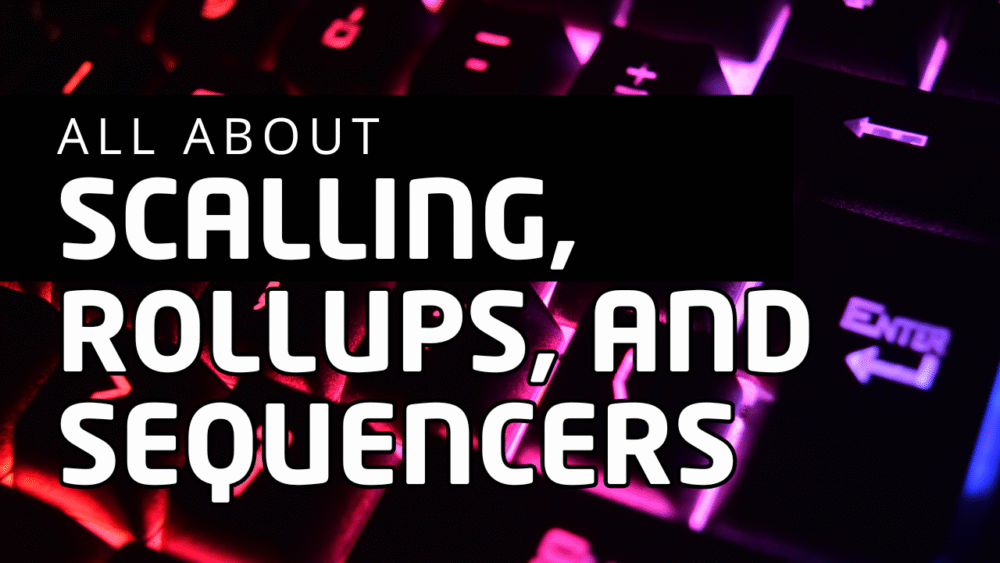If you’re exploring the world of blockchain and Web3, you might hear words like scaling, rollups, and sequencers. These terms sound technical, but they are easy to understand with the right analogies. Let’s break them down in simple words to help you navigate Web3 confidently.
What is Blockchain Scaling?

Imagine your favourite coffee shop becomes extremely popular. At first, the small counter and barista can handle all orders smoothly. But as more people line up, it gets crowded, and the waiting time becomes longer. To solve this, the coffee shop needs to scale up by adding more counters, baristas, or ordering systems to serve customers faster.
In blockchain, scaling refers to increasing the capacity of the network to handle more transactions per second (TPS) without slowing down or becoming too expensive. Most Layer 1 blockchains, like Ethereum and Bitcoin, face scalability issues when too many users want to transact at the same time, leading to high fees and slow confirmations.
Example:
- Ethereum’s scaling challenge: During NFT or DeFi booms, Ethereum gas fees rise dramatically, making it expensive for normal users.
- Solana’s approach: Solana increases scalability by having a fast Layer 1 with high TPS but trades off some decentralization.
What are Rollups?

Back to the coffee shop example – imagine the shop opens a drive-thru window where customers order, pay, and pick up without entering the shop. The drive-thru takes multiple orders and processes them efficiently, then reports all sales to the main cashier inside. This reduces congestion inside the store.
Rollups are a Layer 2 scaling solution that process transactions off the main blockchain (Layer 1), bundle them together, and then post the final results back to Layer 1. This reduces congestion, lowers transaction fees, and keeps the security of the main chain.
There are two main types of rollups:
- Optimistic Rollups: They assume transactions are valid but allow time for fraud proofs in case someone challenges the result.
- Example: Optimism and Arbitrum are Optimistic Rollups for Ethereum. They process transactions off-chain and send data back to Ethereum to finalize.
- ZK Rollups (Zero Knowledge): They use cryptographic proofs to ensure transactions are valid before posting back to Layer 1.
- Example: zkSync is a ZK Rollup solution for Ethereum that ensures faster and cheaper transactions with cryptographic security.
What is a Sequencer in Rollups?

Think of the drive-thru system. To process orders efficiently, there’s a drive-thru manager (sequencer) who decides the order of cars, collects payments, and communicates with the main cashier. Without this person, cars would fight over who gets to order first, causing chaos.
In rollup systems, a sequencer is the component responsible for ordering transactions, processing them quickly, and then sending the batch to the main blockchain. The sequencer helps maintain order and speed but is often a centralized entity, which can be a trade-off in decentralization.
Example:
- Arbitrum and Optimism Sequencers: Both have their own sequencers that order transactions before finalizing on Ethereum. Future upgrades aim to decentralize sequencers to align with Web3’s ethos.
Here’s a quick summary
Scaling: Solves congestion and high fees by increasing blockchain capacity.
Rollups: Layer 2 solutions that bundle transactions to reduce load on Layer 1 while keeping security.
Sequencers: Managers within rollups that order transactions efficiently before posting to the main chain.
Just like a popular coffee shop needs better ordering systems, drive-thru windows, and efficient managers to serve more customers quickly, blockchain networks need scaling solutions, rollups, and sequencers to handle mass adoption. These technologies are crucial to making Web3 faster, cheaper, and accessible for everyone.
Whether you’re a Web3 investor, developer, or enthusiast, understanding these terms will help you make better decisions and follow project updates confidently.
If there’s something you want me to cover next, just let me know. You can follow me here on my website and my Medium to get my latest updates as soon as they drop! You can also contact me through X @AskaraJr and Linkedin



